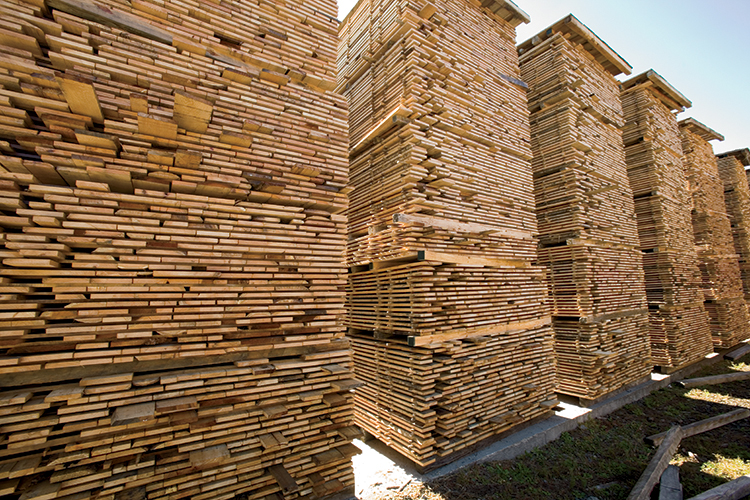Home > Virginia > Virginia Crops & Livestock > Virginia’s Future Forests
Virginia’s Future Forests
In partnership with: Virginia Department of Agriculture and Consumer Services
The Virginia forestry industry not only keeps beautiful forested land a part of the state’s landscape, but also creates jobs, encourages new technological development and bolsters exports in the state.
Of the $70 billion agriculture generates in economic impact each year in Virginia, more than $17 billion of that comes from the forestry sector alone – plus 103,800 jobs and $8.8 billion in value-added impact.
And those numbers will only improve in the future, says Charlie Becker, utilization and marketing manager for the Virginia Department of Forestry. Like many industries, the recession and housing crisis affected the forestry sector negatively, but Becker is optimistic for the future.
“We’re seeing the economy start to pick up and exports of forest products moving up, and it’s looking very promising over the next few years,” he says. “There are new mills coming in, and I see over the next few years that as the economy gets better, it will be positive for the industry and the economy here.”
Becker says in addition to new mills, the Virginia forestry industry is rising to meet worldwide needs in bio-energy and other new technologies.
European nations are reducing their use of coal and other fossil fuels, which has created a need for a renewable, clean energy source – wood pellets.
Ed Sontag – a forester responsible for timber procurement for Enviva, which provides clean, sustainable, renewable woody biomass (wood pellets) to industrial-scale customers – says his company is expanding in Virginia because of the state’s well-maintained forests and the deepwater port in Chesapeake.
“It’s important to us as a company to make sure we’ve got a sustainable resource we can use to provide our customers with wood pellets,” he says. “And the private ownership of forestlands in Virginia has the capability to provide that resource.”
Sontag says Enviva submits to frequent, stringent audits to make sure its wood pellets are being produced responsibly.
“Our customers have asked us to have third parties come in and audit our process — they look at our records, and we show them where wood comes from and how it is harvested,” Sontag says. “We have to use electricity and fossil fuels on the site and in transportation, so all of that goes into the calculations and we do a full account. We have to include the harvesting, transportation and processing of the product. But even with all that, our product generally reduces greenhouse gas emissions by 70 to 80 percent.”
Becker says exporting wood pellets to European utility companies is just one area of the biomass sector.
“The pellets are actually going to a number of different areas,” he says. “They’re also going to residential use in Italy, and several plants are producing them for domestic use.”
Other new forestry products to look for are biofuels from forest products; cross-laminated timber, a building material that will allow skyscrapers and other large buildings to be built with wood instead of steel and concrete; and nanotechnology, which uses the pure, basic chemicals found in wood to make existing products – anything from tennis balls to medical devices – much better than with existing materials.
More new technologies and applications that use forestry products means healthier forests and an assurance that forests remain forests instead of developments, Becker says.
“To have a healthy, prosperous forestry industry, you have to have healthy, prosperous forests,” he says. “They need to be managed, and these markets provide incentives and money to manage them. If you don’t, you run into problems like what they’re facing out West with insect and fire problems. When you give landowners more markets in which to sell their wood products, they have more incentive to keep forests in forestland.”
One of the most successful incentive programs is Virginia’s Reforestation of Timberlands program, which was created in 1972 by the General Assembly with support of the forest industry. Funding for the program comes from a forest products tax that is matched by the state. This program provides a continuous level of funding to ensure that good, healthy seedlings are planted to create new forests and provide sustainable forest products for generations to come.





